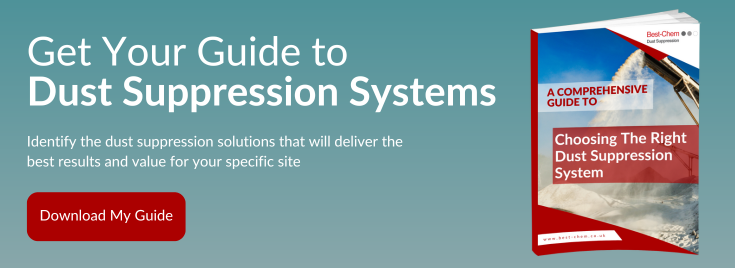
How to Choose the Right Dust Suppression System in Mines for Your Operations
Dust is an unavoidable by product of mining, but how you control it can make the difference between a compliant, safe site and one that is unsafe and inefficient. With increasingly strict regulations and pressure to improve working conditions, the importance of mining dust control has never been greater.
However, selecting the right dust suppression system in mines can be complex. Every operation differs, from the type of material handled to the site layout and environmental conditions. To achieve effective long term control, it’s essential to understand how dust suppression works, and which factors influence the best solution for your site.

Understanding How Dust Suppression Works In Mines
In the mining industry, effective dust control means capturing or containing fine particulate matter before it becomes airborne, especially in high friction zones such as haul roads, crushers, and conveyor belts. Most suppression methods fall into two main categories: wet systems and chemical based solutions. These include water sprays, foam suppression, fog cannons, and surface treatments, each of which is tailored to target specific dust sources and behaviours across the site.
Today’s advanced systems go beyond basic wetting by using additives or foam. Foam suppression is particularly effective as it creates a larger surface area for water to contact dust particles, and it uses significantly less water, which is a key advantage for water conservation and for preventing adverse effects on product quality.
Factors To Consider In System Selection
Choosing the right dust suppression in mines starts with a thorough understanding of your operation. So, what factors should you consider?
-
Type of dust:
Silica dust requires different handling than coal or iron ore dust.
-
Source points:
Is the dust generated during blasting, material transfer, vehicle movement, or stockpiling?
-
Environmental conditions:
Wind direction, humidity, and temperature can all affect system performance.
-
Water availability:
Systems that rely heavily on water may be impractical in arid zones.
-
Automation:
Look for systems that integrate with your existing site infrastructure and require minimal manual input.
Type of Dust: The Specific Hazard of Silica
The type of dust is one of the most critical factors in determining a dust suppression strategy, and in quarrying, no dust is more dangerous than silica. While coal and iron ore dust present their own hazards, Respirable Crystalline Silica (RCS) is a major chronic health risk for workers. This is because RCS particles are incredibly small and can bypass the body's natural defenses, reaching the deepest parts of the lungs.
The Value of a Site Survey
Every mine has a unique dust profile, so a one-size-fits-all solution is unlikely to deliver the effective results needed. Conducting a site survey is essential to identify key emission points and monitor real time particulate levels. With this insight, a tailored dust suppression system can be developed to provide targeted, efficient control, reducing airborne pollution while safeguarding workers and equipment. This process also provides the documented evidence needed for regulatory compliance with bodies like the HSE.
Implementing a dust suppression system in mines
Once the system is selected, implementation involves installation, calibration, and ongoing maintenance. Proper staff training ensures systems are used correctly and consistently. Regular monitoring ensures the system adapts to changing conditions and continues to deliver results.
Overhaul your mine’s dust suppression with Best-Chem’s solutions
For more information about how Best-Chem can improve your site's dust management, please call our specialists today on 01530 272922 or send us a message and we’ll be pleased to get in touch.
